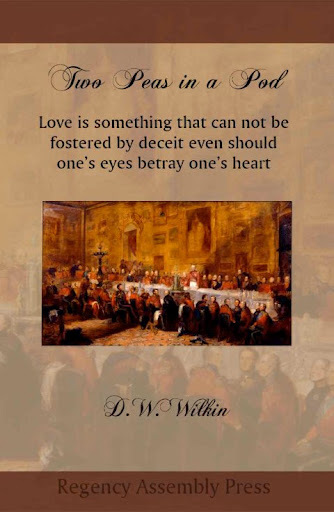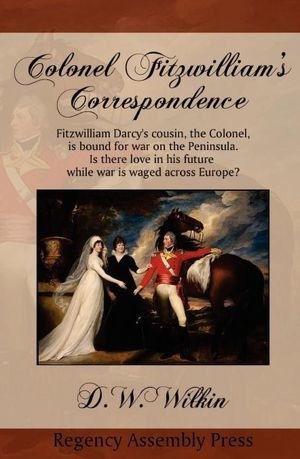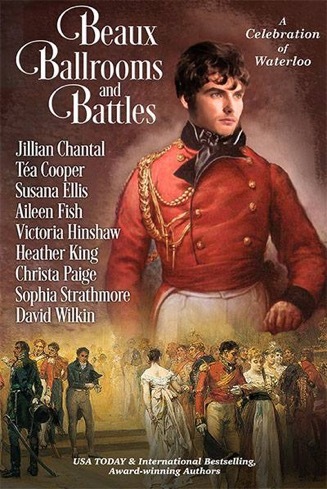D.W. Wilkin's Blog, page 19
October 23, 2016
Regency Personalities Series-Sir George Wood
Regency Personalities Series
In my attempts to provide us with the details of the Regency, today I continue with one of the many period notables.
Sir George Wood
13 February 1743 – 7 July 1824
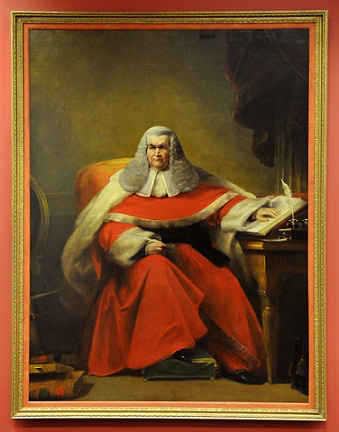
George Wood
Sir George Wood was born at Roystone, near Barnsley in Yorkshire, he was the son of George Wood (1704–1781), vicar of Roystone, by his wife Jane, daughter of John Matson of Roystone. He was intended for a career as a solicitor, and was articled to an attorney at Cawthorn named West. At the end of his articles West urged him to study for the bar.
Entering the Middle Temple, Wood began as a special pleader and established a reputation. He many pupils, among whom were Edward Law, Thomas Erskine, Charles Abbott, James Scarlett, and John Williams. Immediately on being called to the bar he was engaged by the Crown for all the state prosecutions beginning in December 1792. He joined the northern circuit, and on 5 November 1796 he was returned to parliament for Haslemere in Surrey, retaining his seat until 1806.
In April 1807 Wood was appointed a baron of the exchequer and was knighted; as a judge he was painstaking. He was a supporter of prerogative power and took a strong stand against free criticism of the executive by the press; Henry Brougham threatened to move his impeachment.
Wood resigned his office in February 1823, and died on 7 July 1824 at his house in Bedford Square. He was buried in the Temple church. By his wife Sarah he left no issue.
Wood printed for private circulation Observations on Tithes and Tithe Laws, which he later published in 1832 (London).


RAP (Regency Assembly Press) in need of Beta-Readers
Regency Assembly
Press
is looking for
Beta Readers
One novel is ready for Beta Reading
We have a continuation of Pride and Prejudice with Ms Caroline Bingley and her fortune at stake:
Do we think that Mr Hurst married his Bingley Bride without incentive? It is highly probable that Caroline Bingley, even though she has a sharp, acerbic tongue, still is in possession of a fortune and an astute fortune hunter who deciphers this may soon be on the road to, if not a happy marriage, one with financial security.
Please respond or send an email if you are interested


Two Peas in A Pod, A Regency Romance
Two Peas in a Pod has now passed the exclusivity to Amazon test and is available in wider release, electronically (digitally) for other readers now. We sold a few copies on Amazon but nothing to warrant an exclusivity period. Amazon is too big and too full of itself.
Two Peas in a Pod is still available as a Trade paperback click here to order Regency Assembly Press.
$3.99 for an electronic copy. The Trade Paperback, due to publishing costs and the cut that Amazon takes continue to see a Trade Paperback costing $15.99 (The much hyped royalties that we writers are supposed to get is nowhere near what the news reports say. Most of that price is taken by Amazon.)
iBookstore (These are my books
and still at Amazon
Here is a picture, which of course you can click on to go fetch the book:
Love is something that can not be fostered by deceit even should one’s eyes betray one’s heart.
Two brothers that are so close in appearance that only a handful have ever been able to tell them apart. The Earl of Kent, Percival Francis Michael Coldwell is only older than his brother, Peregrine Maxim Frederick Coldwell by 17 minutes. They may have looked as each other, but that masked how they were truthfully quite opposite to one another.
For Percy, his personality was one that he was quite comfortable with and more than happy to let Perry be of a serious nature. At least until he met Veronica Hamilton, the daughter of Baron Hamilton of Leith. She was only interested in a man who was serious.
Once more, Peregrine is obliged to help his older brother by taking his place, that the Earl may woo the young lady who has captured his heart. That is, until there is one who captures Peregrine’s heart as well.
There is a visual guide to Two Peas in a Pod 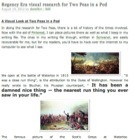 as well at Pinterest and a blog post here.
as well at Pinterest and a blog post here.


October 22, 2016
Regency Personalities Series-Frederick Ponsonby 3rd Earl of Bessborough
Regency Personalities Series
In my attempts to provide us with the details of the Regency, today I continue with one of the many period notables.
Frederick Ponsonby 3rd Earl of Bessborough
24 January 1758 – 3 February 1844
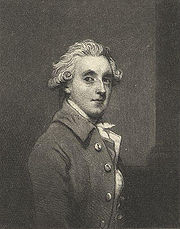
Frederick Ponsonby
Frederick Ponsonby 3rd Earl of Bessborough was the eldest son of Viscount Duncannon (who succeeded as The 2nd Earl of Bessborough in July 1758) and Lady Caroline Cavendish, daughter of The 3rd Duke of Devonshire. He succeeded to his father’s titles in 1793. He was educated at Christ Church, Oxford, and obtained the degrees of Master of Arts and Doctor of Civil Law.
He sat in the House of Commons as member for Knaresborough from 1780 until his succession to the peerage and was a Lord of the Admiralty in 1782–83
Bessborough usually made a favourable first impression: quiet, but with “the most mild and amiable manner”. On the other hand, he was a notoriously bad husband, alternating between neglecting Henrietta and insulting her in public. While there were faults on both sides- she was addicted to gambling and had numerous affairs- society in general judged him to be the greater offender.
On 27 November 1780, he had married Lady Henrietta Spencer, second daughter of John Spencer, 1st Earl Spencer. The marriage was notoriously unhappy and Bessborough began divorce proceedings in 1790 but under intense pressure from his relatives dropped them. They had four children:
John Ponsonby, 4th Earl of Bessborough(1781–1847).
Major General Sir Frederick Cavendish Ponsonby (1783–1837).
Lady Caroline Lamb(1785–1828). Her husband was the 2nd Viscount Melbourne, the Prime Minister, however, she was never the Viscountess Melbourne because she died before he succeeded to the peerage; hence, she is known to history as Lady Caroline Lamb.
William Francis Spencer, 1st Baron de Mauley (1787–1855).
Lady Bessborough died in 1821 of a chill caught while travelling abroad. Her husband outlived her by more than 20 years, dying at Canford House, Dorset in 1844.


A Trolling we Will Go Omnibus: The first three Fantasy stories of Humphrey and Gwendolyn
A Trolling We Will Go Omnibus:The Early Years
Not only do I write Regency and Romance, but I also have delved into Fantasy.
The Trolling series, (the first three are in print) is the story of a man, Humphrey. We meet him as he has left youth and become a man with a man’s responsibilities.
We follow him in a series of stories that encompass the stages of life. We see him when he starts his family, when he has older sons and the father son dynamic is tested.
We see him when his children begin to marry and have children, and at the end of his life when those he has loved, and those who were his friends proceed him over the threshold into death.
All this while he serves a kingdom troubled by monsters. Troubles that he and his friends will learn to deal with and rectify.
Here are the first three books together as one longer novel.
A Trolling We Will Go, Trolling Down to Old Mah Wee and Trolling’s Pass and Present.
Available in a variety of formats.
For $6.99 you can get this fantasy adventure.
Barnes and Noble for your Nook
The stories of Humphrey and Gwendolyn. Published separately in: A Trolling we Will Go, Trolling Down to Old Mah Wee and Trollings Pass and Present.
These are the tales of how a simple Woodcutter and an overly educated girl help save the kingdom without a king from an ancient evil. Long forgotten is the way to fight the Trolls.
Beasts that breed faster than rabbits it seems, and when they decide to migrate to the lands of humans, their seeming invulnerability spell doom for all in the kingdom of Torahn. Not only Torahn but all the human kingdoms that border the great mountains that divide the continent.
Feedback
If you have any commentary, thoughts, ideas about the book (especially if you buy it, read it and like it
October 21, 2016
Regency Personalities Series-Boodles
Regency Personalities Series
In my attempts to provide us with the details of the Regency, today I continue with one of the many period notables.
Boodles
1762-
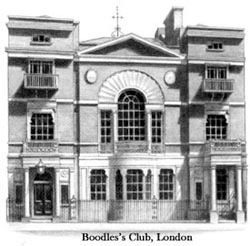
Boodles Gentlemen’s Club
Founded in 1762 by the Earl of Shelburne, William Petty-FitzMaurice who later became the 1st Marquess of Lansdowne and the Prime Minister of England during the last days of the Revolutionary War.
The club came to be known after the name of its head waiter, Edward Boodle.
Boodle’s is regarded as one of the most prestigious clubs in London, and counts many British aristocrats and notable politicians among its members. It is the second oldest club in the world, with only White’s being older. Boodle’s Orange Fool is a traditional club dish.
Early members were opponents of William Pitt the Elder’s foreign policies relating to the Seven Years’ War, and political allies of Lord Shelburne. The club is generally regarded as being aligned with the Conservative Party, with many of its current and former members holding important positions within the party, although the club is not formally tied to any political party. During the Regency era, Boodle’s became known as the club of the English gentry, while White’s became the club of the more senior members of the nobility.
It is reputed that Beau Brummell’s last bet took place at the Club before he fled the country to France. Today, membership is strictly by nomination and election only.
In 1782 Boodle’s took over the “Savoir Vivre” club house at 28 St. James’s Street, London, and has been located there ever since. The building had been designed by John Crunden in 1775. The ground floor was refurbished by John Buonarotti Papworth between 1821 and 1834.


A Jane Austen Sequel: Colonel Fitzwilliam’s Correspondence
Colonel Fitzwilliam’s Correspondence For your enjoyment, one of the Regency Romances I published.
It is available for sale and I hope that you will take the opportunity to order your copy.
For yourself or as a gift. It is now available in a variety of formats.
For just a few dollars this Regency Romance can be yours for your eReaders or physically in Trade Paperback.
Visit the dedicated Website
Barnes and Noble for your Nook or in Paperback
Amazon for your Kindle or in Trade Paperback
Witnessing his cousin marry for love and not money, as he felt destined to do, Colonel Fitzwilliam refused to himself to be jealous. He did not expect his acquaintance with the Bennet Clan to change that.
Catherine Bennet, often called Kitty, had not given a great deal of thought to how her life might change with her sisters Elizabeth and Jane becoming wed to rich and connected men. Certainly meeting Darcy’s handsome cousin, a Colonel, did not affect her.
But one had to admit that the connections of the Bingleys and Darcys were quite advantageous. All sorts of men desired introductions now that she had such wealthy new brothers.
Kitty knew that Lydia may have thought herself fortunate when she had married Wickham, the first Bennet daughter to wed. Kitty, though, knew that true fortune had come to her. She just wasn’t sure how best to apply herself.
Feedback
If you have any commentary, thoughts, ideas about the book (especially if you buy it, read it and like it
October 20, 2016
Regency Personalities Series-Sir Robert Grant
Regency Personalities Series
In my attempts to provide us with the details of the Regency, today I continue with one of the many period notables.
Sir Robert Grant
1779–9 July 1838
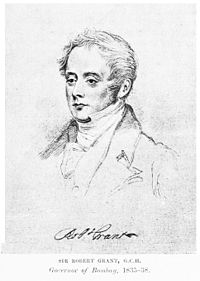
Robert Grant
Sir Robert Grant was born in India, the son of Charles Grant, chairman of the Directors of the Honourable East India Company, and younger brother of Charles Grant, later Lord Glenelg. Returning home with their father in 1790, the two brothers were entered as students of Magdalene College, Cambridge, in 1795. In 1801 Charles was fourth wrangler and senior Chancellor’s medallist; Robert was third wrangler and second Chancellor’s medallist.
Grant was called to the bar the same day as his brother, 30 January 1807, and entered into legal practice, becoming King’s Sergeant in the Court of the Duchy of Lancaster, and one of the Commissioners in Bankruptcy. He was elected Member of Parliament for the Elgin Burghs in 1818, and for the Inverness Burghs in 1826. The latter constituency he represented for four years. In 1830 and 1831, he was returned for Norwich, and in 1832 for Finsbury. He advocated for the removal of the disabilities of the Jews, and twice carried bills on the subject through the House of Commons. They were, however, rejected in the Upper House, which did not yield on the question until 1858, twenty years after Grant’s death. In 1832 he became Judge Advocate General, and in 1834 was appointed Governor of Bombay and GCH. He died at Dapodi, near to Poona on 9 July 1838.
In his younger days Grant published an essay on the trade and government of India, and a sketch of the early history of the British East India Company. He was the author of a volume of sacred poems, which was edited and published after his death by his brother, Lord Glenelg. This volume includes some hymns; his best known hymn is “O Worship the King”, based on Psalm 104.
Grant Medical College, the oldest medical college in Mumbai, India, is named after Robert Grant, as are Grant Road and Grant Road Station in the same city.
Grant married Margaret, only daughter of Sir David Davidson of Cantray, with issue two sons and two daughters:
Sir Charles Grant, K.C.S.I, formerly a Member of Council in India;
Colonel Robert Grant, R.E., Deputy Adjutant General;
Sibylla Sophia, married to Granville Ryder, Esq.; and
Constance Charemile, who died in childhood.
Ten years after his death, Margaret married Josceline Percy, second son of the Earl of Beverley, with issue one son, George Algernon, born in 1849, who later became Capt. and Lt. Col. of the Grenadier Guards.


Beaux, Ballrooms, and Battles
A new Regency Anthology
Beaux, Ballrooms, and Battles anthology, celebrating the 200th anniversary of the victory at Waterloo in story.
Looks good, huh? The talented writer and digital artist, Aileen Fish created this.
It will be available digitally for $.99 and then after a short period of time sell for the regular price of $4.99
The Trade Paperback version will sell for $12.99
Click on the Amazon Link—>Amazon US

My story in the anthology is entitled: Not a Close Run Thing at All, which of course is a play on the famous misquote attributed to Arthur Wellesley, “a damn close-run thing” which really was “It has been a damned nice thing — the nearest run thing you ever saw in your life.”
Samantha, Lady Worcester had thought love was over for her, much like the war should have been. The Bastille had fallen shortly after she had been born. Her entire life the French and their Revolution had affected her and all whom she knew. Even to having determined who she married, though her husband now had been dead and buried these eight years.
Yet now Robert Barnes, a major-general in command of one of Wellington’s brigades, had appeared before her, years since he had been forgotten and dismissed. The man she had once loved, but because he had only been a captain with no fortune, her father had shown him the door.
With a battle at hand, she could not let down the defenses that surrounded her heart. Could she?
As her father’s hostess, she had travelled with him to Brussels where he served with the British delegation. Duty had taken her that night to the Duchess of Richmond’s ball. The last man she ever expected to see was Robert, who as a young captain of few prospects, had offered for her, only to be turned out by her father so that she could make an alliance with a much older, and better positioned (wealthy), aristocrat.Now, their forces were sure to engage Napoleon and the resurgent Grande Armée. Meeting Robert again just before he was to be pulled into such a horrific maelstrom surely was Fate’s cruelest trick ever. A fate her heart could not possibly withstand.
Here are the first few paragraphs to entice you:
Chapter One
“Come father, we shall be dreadfully late. Already the other guests of the inn have all departed for the ball.” Samantha distinctly heard him grunt. Her father did not like balls.
“You will not fault me if I stay to the card room with the other old gentlemen. We always have much to discuss,” he said. Her father served with the delegation led by Sir Charles Stuart.
In a moment he would complain about the pains caused by his gout. Always handy when social obligations were required and never present when he had his ‘important’ work to do.
“Father, are you sure that there is going to be a battle? I just can’t believe that Her Grace of Richmond is hosting a ball when the soldiers will be going off to fight.” Lady Worcester, who had been once just The Honourable Samantha Villiers, asked of her father, the second Viscount Haddington.
She had married the Earl of Worcester twelve years before, a man who had died before the Peace of Amiens had been shattered. They had no children, and as there were only distant heirs, the property went to those relations whilst the title became extinct. Samantha was the last Lady Worcester.
“The fighting is close at hand, but I have every confidence in the Duke of Wellington. Marvellous man. The French will be quite surprised when he takes this army and invades their lands,” her father said. “I am afraid I shall not be able to stand up and offer one dance with you, my good girl. The pains in my foot are troubling me.”
As Samantha had predicted.
That was always the excuse. Samantha was assured that her father had not once stood up to dance since her mother had died.
Over the many years she had had to study her father, for she had taken to being the hostess of his household upon the death of her husband, her mother having died before her own marriage, she had noted that her father was more impressed by title, position, and wealth, than by capabilities.
However, her own study of Wellesley, now the Duke, paralleled her father’s assessment at least when it came to Wellington’s successes as a commander. Yet the Duke had never faced Napoleon. Until only the most recent years, the Emperor of France had seldom lost any engagement. The Duke of Wellington had faced Napoleon’s lieutenants, and captains, but never the very best commanders of Le Grande Armée.
“It is understandable, Father, with your foot being troublesome, that you wish to proceed to the card room. You should enjoy this night. It will all be over too soon, and as you say, the engagement is imminent. Many here this evening we may never know again.” More than twenty years of war and she had known the loss of several military men.
Her father nodded. He had trained her to recognize the truth regarding these years of war. It was why he had been so against a liaison with Robert Barnes when she had first come out. Her other ardent suitor during her Season in ’03.
A time long ago.
Samantha and the Viscount were in the foyer of their lodgings. All the best places had been taken by those of great rank and wealth. This was a small inn that six other families shared.
She and her father were ready to leave for the ball, their hired carriage at the front of the building even then. Samantha had looked from the window and seen their coachman, Phillipe, waiting patiently.
He was paid for from her Worcester monies. The two years that Samantha had not lived with her father whilst married, had resulted in his losing near all the Haddington monies. He had retained very little of the capital, none of grandfather’s lands, and survived on monies advanced by the government to see to his office as well as what monies Lady Worcester was able to provide to the expenses of his household. Expenses that she managed with prudence.
Shaking her head and exiling the thought away, she pondered on a ball in a coach house. How novel to attend.
She had called on the Duchess several times, as they knew each other socially. Samantha well knew many of the women that had formed society here in Brussels. Her father’s stature with the delegation caused her to be a hostess to much smaller events than the ball.
With the assured defeat of Napoleon the war would end and her father’s service would be over. So also would the service of that other man who had asked for her before.
Robert had gone back to fight once war broke out again when the Peace of Amiens fell apart. She had since lost track of him.
Samantha had forced herself to lose track of him.
Regency Assembly
Press
is looking for
Beta Readers
One novel is ready for Beta Reading
We have a continuation of Pride and Prejudice with Ms Caroline Bingley and her fortune at stake:
Do we think that Mr Hurst married his Bingley Bride without incentive? It is highly probable that Caroline Bingley, even though she has a sharp, acerbic tongue, still is in possession of a fortune and an astute fortune hunter who deciphers this may soon be on the road to, if not a happy marriage, one with financial security.
Please respond or send an email if you are interested


October 19, 2016
Regency Personalities Series-Charles Simeon
Regency Personalities Series
In my attempts to provide us with the details of the Regency, today I continue with one of the many period notables.
Charles Simeon
24 September 1759 – 13 November 1836
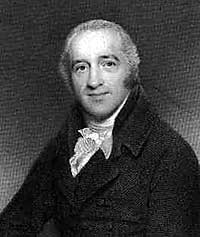
Charles Simeon
Charles was born at Reading, Berkshire in 1759 and baptised in the parish church on 24 October of that year. He was the fourth and youngest son of Richard Simeon (died 1784) and Elizabeth Hutton. His eldest brother, named Richard after their father, died early. His second brother, John, entered the legal profession, became an MP and received a baronetcy. The third brother, Edward Simeon, was a director of the Bank of England.
Simeon was educated at Eton College and King’s College, Cambridge. In 1782 he became fellow of King’s College, and took orders, receiving the living of Holy Trinity Church, Cambridge, in the following year. He was at first so unpopular that services were frequently interrupted, and he was often insulted in the streets. Having overcome public prejudice, he subsequently gained a remarkable and lasting influence among the undergraduates of the university.
He became a leader among evangelical churchmen, was one of the founders of the Church Missionary Society in 1799, the London Society for Promoting Christianity Amongst the Jews (now known as the Church’s Ministry Among Jewish People or CMJ) in 1809, and acted as adviser to the British East India Company in the choice of chaplains for India.
In 1792 he read An Essay on the Composition of a Sermon by the French Reformed minister Jean Claude. Simeon found that their principles were identical and used the essay as the basis for his lectures on sermon composition. Claude’s essay also inspired Simeon to make clear his own theological position, the result being Horae Homileticae, his chief work.
He published hundreds of sermons and outlines of sermons (called “sermon skeletons”), still in print, that to some were an invitation to clerical plagiarism. His chief work is a commentary on the whole Bible, entitled Horae homileticae (London). The Simeon Trust was established by him for the purpose of acquiring church patronage to perpetuate evangelical clergy in Church of England parishes. It continues to operate to this day.
Charles Simeon is often hailed as something of an ancestor of the evangelical movement in the Church of England.
According to the historian Thomas Macaulay, Simeon’s “authority and influence… extended from Cambridge to the most remote corners of England, …his real sway in the Church was far greater than that of any p Simeon rimate.” He is remembered in the Episcopal Church of the United States with a Lesser Feast and in the Anglican Church of Canada with a Commemoration on 13 November. In the Church of England he is remembered with a Lesser Festival on 13 November. His memorial by the monumental mason Hopper in Holy Trinity Church (Cambridge), was described by architectural critic Nikolaus Pevsner as an “epitaph in Gothic forms.”



